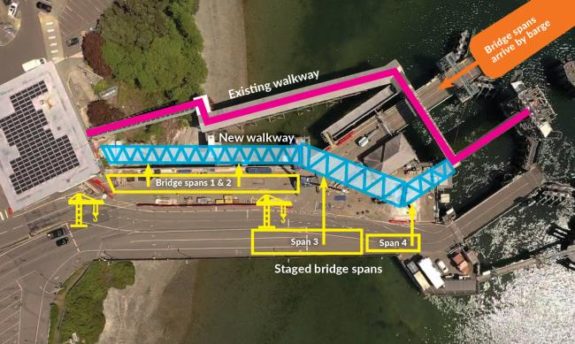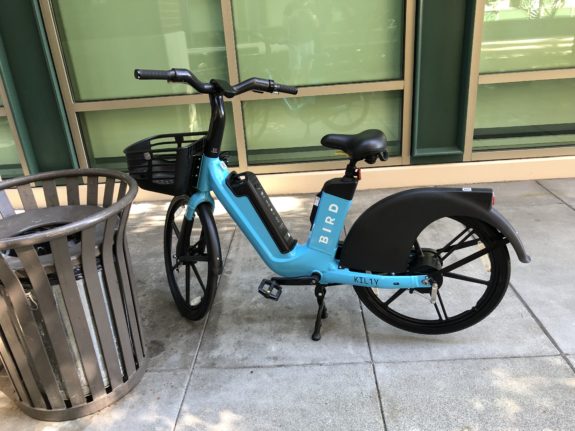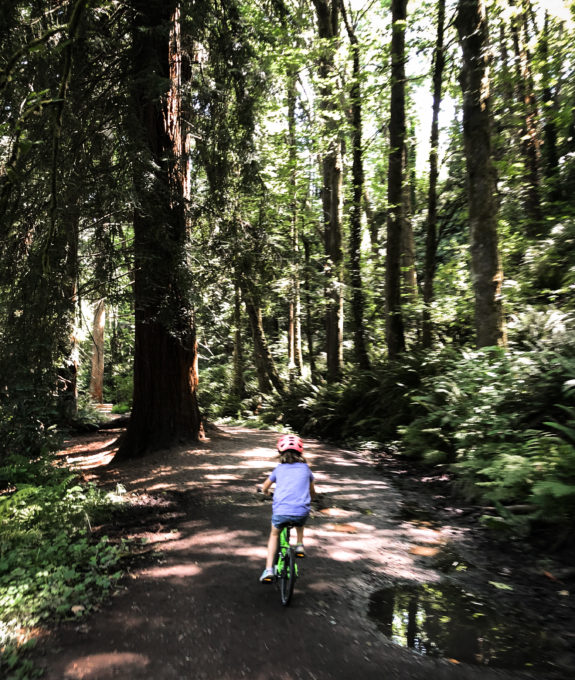
(EDIT: I changed the headline because some readers thought the change was permanent. Bikes, along with all vehicles using the car deck, will only be disallowed during this construction period.)
Construction work to build a new elevated walkway at the Bainbridge Ferry Terminal will completely close off access to the ferry car decks. The good news is that Washington State Ferries (“WSF”) will maintain walk-on service. The bad news is that bicycles will not be allowed. From WSF:
We separate walk-on and ADA passengers from wheeled vehicles for passenger safety, which is why we cannot accommodate bicycles and electric scooters during the closure. With higher pedestrian volumes, it is not feasible or safe for us to mix pedestrians with bicycles and scooters both inside the ferry and in the terminal waiting areas. For those who want to store their bikes for use on either side of the route, the Kitsap Transit Bike Barn has 79 indoor and 33 outdoor bike parking spaces and we will provide a secure lock up area on the Seattle side or check into bike lockers. Another option is to walk on and use bike share in Seattle.
The closure is scheduled to begin 1 a.m. September 7 and go until 3 a.m. September 13. During this time, they will run single-boat service, though perhaps loading and unloading will be much faster without all the cars. They are also prepared to allow emergency vehicle access as needed.
It’s too bad that they are not accommodating bikes since biking could take a load off the limited car parking and drop off capacity on both sides of Elliott Bay. There are about 112 bike parking spots in the Bike Barn on Bainbridge, which may not be enough given how many people typically bike on board. The Seattle side will be a bit more interesting. WSF says they “will provide a secure lock up area on the Seattle side,” though they have not yet posted the exact details of how that will work and what the capacity will be. Typically, there is no publicly-accessible secure bike parking near the Seattle Ferry Terminal. WSF also suggests in the quote above that you should bike to a closer transit station, use secure bike parking there, then take transit to the ferry. This is a good suggestion if feasible.
(more…)









